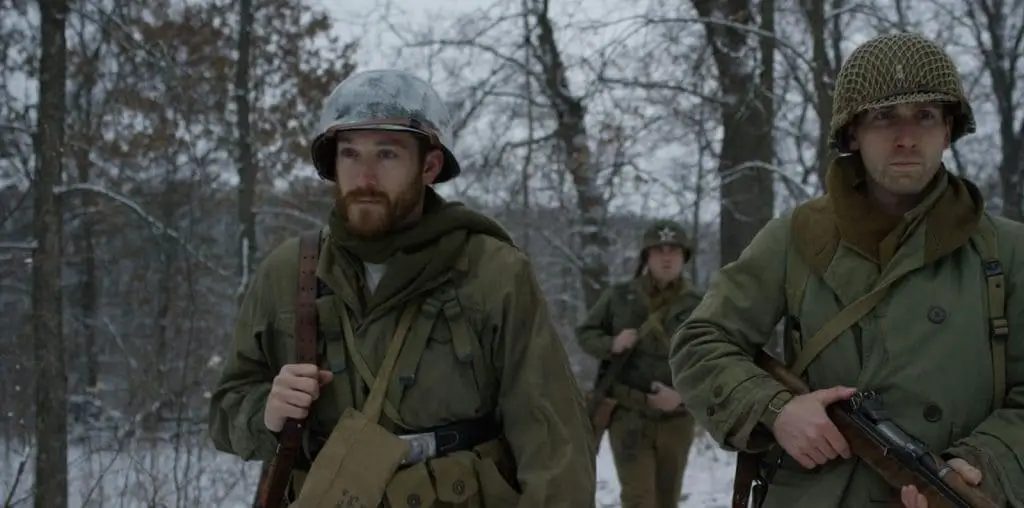
Where shall I begin? Shall I tell how funny this film is, how many times I wiped tears out of my eyes? Shall I continue Director Malcolm D. Lee’s hidden message of the film that comedy must be used to discuss race because many of us (black & white) refuse to take any comment on it seriously? Shall I run the risk of being labeled an anti-Semite by pointing out that many of the moans and groans surrounding “not another race movie” seem non-existent for “The Believer” not to mention “Uprising”, “Saving Private Ryan”, “Apt Pupil” or the yet unnamed film that I am sure will be released sometime in 2005-2006? Shall I use this as an opportunity to convey that these filmmakers have assembled a film that has as much in common with Wayans’ ensemble family of players as it does with Christian Metz? Shall I tell you that this film will not make you acknowledge your own racial misgivings but instead will give you a tremendous feeling of participation and ownership of the unique experience we call being an American? Or shall I write something stylistic that will completely compliment the film and run the risk of losing my credibility as a reviewer?
Undercover Brother is a pastiche parody of the blacksploitation films Mr. Tarintino is so fond of, ‘70’s crime serials that seems to perennially inhabit our psyche ( be it through the retro fitting of Hollywood plotlines or the fashion and music industries co-opting of funk/disco ascetics and sensibilities) and the now well worn path of a parody that parodizes it’s own parodying of parodies. Whichever way this concoction settles the resulting amalgamation is pure brilliance, you really need to see this movie. Due to the extremely complex nature of how the film utilizes film theory, feminist film theory, semiotics and iconography I will give you a brief synopsis of the events of Undercover Brother so that I may utilize a majority of this review to analyze the devices employed; my primary reason for this is not to spoil the funniest film have seen this year (move over “The Independent”, move over “All About The Benjamins”).
“Undercover Brother” follows the tale of Undercover Brother (Griffin) as he is recruited by a black power organization (T.H.E.B.R.O.T.H.E.R.H.O.O.D.) to help fight the man.
Utilizing comedic devices, wordplays and some excellent sketch comedy the film plays out in traditional action/ comedy fashion with our hero meeting a variety of stereotypes and eventually getting the girl and saving the day.
The film opens with the secret organization (T.H.E.B.R.O.T.H.E.R.H.O.O.D.) attempting to steal money from The Man’s bank. Let me take the time to inform you of the serious word play at work here. The film actually creates a character called “The Man” whose only desire is to suppress people of color. This coincides with Eddie Griffin’s character Undercover Brother and also Soul Sistah, Revolutionary Brother, Smart brother and She-devil. This is no doubt the major point of contention that other reviewers will begin with. The decision to name the characters by their archetype/stereotype has a disarming effect. Initially played for comedy, the use of these names in dialogue constantly forces us to weigh the characters individually actions against the stereotype. And in doing so we begin to view them as individuals and not as the stereotypes they have been created to portray. So effective is this, that one begins to realize how the individual person is lost amongst the referendums and organizations that are supposed to value the individual. This is the first ubiquitous display of “being everywhere and nowhere” at the same time. It is Screenwriter John Ridley’s greatest strength.
Upon entering the bank the agents from T.H.E.B.R.O.T.H.E.R.H.O.O.D. inadvertently have their bank-robbing plot foiled by Undercover Brother a “soul brother with a Robinhood complex.” Undercover Brother was in the bank erasing credit files on The Man’s hard drive so that black people can receive mortgage loans. With a comedic finger pointing at 60’s black power activism and radical political activism ( S.L.A.’s killing of a security guard) the narrative is firmly placed in the neighborhood of the revolutionary. And diverting away from traditional comic barbs, this scene graphically illustrates one of the major problems that minorities face in the present economy.
Fast-forwarding to the home of the T.H.E.B.R.O.T.H.E.R.H.O.O.D. where Undercover Brother is introduced to all the crime-fighting cast members; Revolutionary Brother (Chapple), Soul Sistah (Aunjanue Ellis), Smart Brother (Gary Anthony Williams) and the white intern Lance. The white intern Lance is played by Neil Patrick Harris (who is pretty much reviving his “Doogie Howser” role) who received the intern position through affirmative action. It is not a coincidence that he is initially staged opposite Revolutionary Brother and that they are gradually brought to equal weight. This is what is termed as a textual use of star imagery. Doogie Howser was the wunderkind and beneficiary of white male privilege, honor classes and standardized testing. He is offset by Revolutionary Brother’s (Chapple stealing the show) constant complaining and conspiracy theories falling on deaf ears. Revolutionary Brother quests only for an opportunity, as does the white intern Lance. This seemingly stereotypical imagery is used to illustrate that the larger issue is opportunity, and that opportunity is inextricably bound with class. Laugh all you want at their jokes and their banter, but you will identify with their quest for not only greater opportunities, but to make sense of it all.
There is this running joke, albeit it layed on thick at times, that The Man’s #2 henchman and fellow “quasi-racist” Mr. Feather (Chris Katttan not exactly in “Corkey Romano” mode) has this habit of listening to hip-hop music and affecting hip-hop slang if not all out ebonics (due to the constraints of time I will not comment on the commutability of black language and culture that is never more than a step away in regression). Again this imagery has a prestigious heritage. Similar to John Tuturro’s character Pino in Spike Lee’s “Do The Right Thing” who agrees with Saul’s hate mongering but paradoxically Michael Jordan is his favorite basketball player and reminiscent of Robert’s De Niro’s use of music in “A Bronx Tale” (where the white youth’s preparing to loft molotov cocktails are listening to Jimi Hendrix). All of this serves to illustrate the problem with trying to reconcile imagery and stereotypes with your own experiences and appreciation of black people and culture.
In an autonomous sequence that will escape most of you, Undercover Brother sells out. We see our fearless hero decked out in khaki’s and boat shoes. Laugh all you want but this is a serious attack on our socio-economic structure. Changes in dress are changes in class. For the donning of the preppie clothes corresponds with a change in attitude and language; can the masses possibly grasp this? Undercover Brother successfully integrates himself because his “new threads” make him middle class (in appearance, thought and action) though this device is primarily a tool of feminist cinema here it is used flawlessly. Again the major theme of this sequence and the film as a whole is that race is bound with gender and class.
Later in the film the (now infamous due to the trailer) “Catfight” sequence holds the most salient attack. Again this is played for laughs but make no bones about it, this is the role of patriarchy… plain and simple. Undercover Brother’s fight to the death being so abruptly interrupted by the foley track of a catfight speaks volumes. Black and white patriachary are extremely similar in nature. It is the propensity to suppress women at several junctures that commands the most insight. For the male characters have set aside all their differences in their commodification and objectivization of women (in a literal sense as they pull up lazy-By chairs and begin to eat munchies and drink refreshments as they cheer and comment).
This film is about America, believe it or not. I personally enjoyed the reflection of our collective confusion and sometimes inability to reconcile what we commonly attribute to so-called blackness, so-called whiteness and the intrinsic problems America has with race, gender, opportunity and acknowledgment of its sorted past. When set against the backdrop of a parody which literally informs us that media sources are not always objective and can at times have a hidden agenda, this “film” (a term a hesitate to use because it boundaries seem beyond the 1.85:1 convention) is an extremely useful tool in examining all of the aforementioned complex issues. I firmly believe (coming on the heels of “All About The Benjamins”) that we are witnessing the resurgence of a genre and it behooves you to participate. Malcom D. Lee is a consummate professional and has made a wise choice in how to approach this material, for a strong case could be made to use this as the initial tool in our school systems to begin serious discussions about race and class. I have not commented on his style or his vision because it is dead-on and there is no way to give it justice in the textual forms of communication. The writing and acting are spot on and general filmmaking will distinguish this film as it ages; though I am sure it’s box office will be hurt by the one-sheet and it’s ad campaign. Though I said I wouldn’t go into this, the way these films (black urban comedies) are being positioned and advertised is beginning to seriously inhibit their crossover appeal. See this film and laugh your a*s off, and in between your tears of joy learn the true cause of racial and ethnic division.



Is this review a parody of a terrible liberal arts student essay, or the real thing? I literally cannot tell the difference.